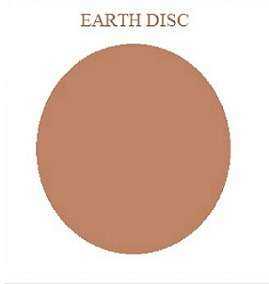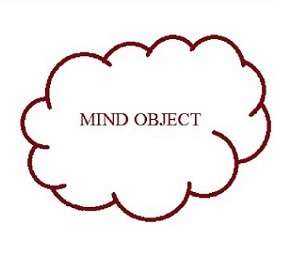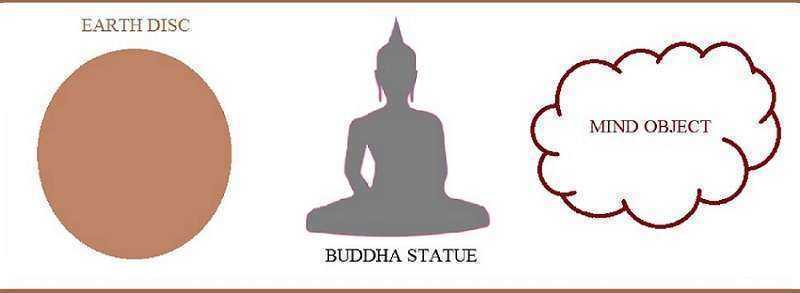What is jhana consciousness? Jhana is a Pali word that is derived from two roots. As a result, it has two different but also very similar meanings. The compounded meanings for jhana are “contemplate” and “burn up”. According to the Abhidhamma instructions, we access jhana consciousness factors during meditation for “contemplation” to “burn up” the 5 hindrances. As a result, adverse elements that impede concentration are eliminated.
The Buddha identified the 5 hindrances as sensual desire, ill will, sloth and torpor, restlessness and worry, and doubt. Therefore, if the practitioner can successfully access jhana consciousness during meditation it is possible to temporarily experience a higher realm of consciousness known as the “fine material sphere consciousness”.
Fine Material Plane of Existence
The four planes of existence that the Buddha identified are:
- Sensual Plane (5 aggregates of rupa, feeling, perception, mental factors, consciousness)
- Fine Material Plane
- Immaterial Plane
- Supramundane (Nibbana)
In the fine material plane the existence of the grosser forms of sensual matter no longer exist and what is left is the subtle residue. In order to experience the fine material plane one must develop jhana meditative states. As a result of these high attainments in concentration, one can obtain rebirth into this higher realm.
Develop Jhanas with Samatha Meditation
An object of concentration is needed to obtain jhana consciousness. The Pali Canon refers to this mental image as a “counterpart sign”. Although the contemplative image is mental, it is usually based on a material object. As a result, the object of concentration is indeed a “fine material” form or only the visual residue of the actual object.
It is common for a disc to be used as the object during samatha meditation practice. However, other focal points can be used such as the rising and falling of the abdomen, Buddha statues and even mind objects such as a mental state or consciousness. Although, the preferred object for trainees is usually an earth colored disc.

The meditative device which is used as the focal point is called a “kasina”. When concentration on the kasina matures it will give rise to a “learning sign” which in turn gives rise to the counterpart sign that is the object of jhana.

Abhidhamma vs Suttanta Method
The Buddha explained that there were 5 jhanas in the Abhidhamma Pitaka however he only included 4 jhanas in the Suttanta Pitaka. The disparity exists because he chose to leave out the second jhana of the Abhidhamma in the Suttanta discourses. As a result, there are only 4 jhanas in the Suttanta.
I suspect that the Sutta teaching method was less formal and not so comprehensive as the Abhidhamma. Therefore, the Buddha may have used an abbreviated method of instruction in the Suttanta. However, my research is based on the Abhidhamma Pitaka so I will describe the 5 jhana method below.
Introduction to the 5 Jhanas
Using the definition provided by the Abhidhamma Pitaka, each jhana has specific factors which must be present and working together in unison. If so, attainment and satisfaction of each factor in the jhana allows the practitioner to progress to the higher concentration levels.
The individual jhana factors are initial application (vitakka), sustained application (vicara), zest (piti), happiness (sukha) and one-pointedness (ekaggata). Not all of the factors are required in each jhana. The first jhana requires the presence of all 5 factors but progression to the higher levels of concentration reduces the number of jhanas necessary maintain it.
For example, when space capsule blasts off into the upper atmospheres, as it progresses higher and gains momentum the rocket boosters and empty fuel canisters which are no longer needed are detached and released. However, the momentum of the space capsule continues towards the destination. Of course, this space ship example is not cited in the Abhidhamma which dates back to the 3rd century BCE, but it struck me as a constructive analogy.
Descriptions of the Jhana Consciousness Factors
The Abhidhamma discourages prompting during the practice of meditation. Therefore, it is imperative to have prior knowledge of the definitions and also understand the true nature of the jhana factors in advance. This is because internal or external encouragement during meditation is counter productive and it is more likely to obstruct concentration rather than enhance it. Thus, one should thoroughly understand the jhana factors beforehand in order to prevent obstruction during practice.
There is come controversy about this among commentators. However, the editors of the Abhidhamma conclude that successful attainment of the jhanas is neither prompted nor unprompted.
Initial Application (vitakka)
Vitakka is performed by directing the mind and its concomitants onto the object. “Like a bee diving towards the flower”, vitakka guides the mind to the target. Additionally, vitakka has the special task of eliminating the hindrance of sloth and torpor.
Sustained Application (vicara)
After the mind is directed to the object, vicara holds it there and repeatedly investigates the manifested object. Such as the “bee hovering above the flower” after it has approached, but before it lands. Vicara is the jhana factor that preforms the task inhibiting the hindrance of doubt.
Zest (piti)
The translation of the term “piti” is to refresh but it is often also translated as rapture. Nonetheless, the objective of piti is to refresh the mind on the object. Piti can also be described as a form of elation.
Furthermore, the commentators distinguish between 5 progressive levels of piti that arise as concentration increases.
- Minor zest (hairs rise on the body)
- Momentary zest (see flashes of lightening)
- Showering zest (breaks over the body repeatedly like waves on the seashore)
- Uplifting zest (levitation)
- Pervading zest (pervades the body such as an inundation fills a cavern).
It is the last level of piti #5 which is sought after for this jhana. If so, the jhana factor “piti” will suppress the hindrance of ill will.
Happiness (sukha)
Sukha is a pleasant feeling which is associated with joy. However, sukha in this sense is not the same as pleasant bodily feelings and therefore it is detached from sensual pleasures. It can be considered an unworldly spiritual happiness similar to bliss.
Although piti and sukha are closely related, they are distinguishable. Piti belongs in the aggregate of mental formations and it is associated with volition and desire. However, sukha is a feeling that is associated with the aggregate of feeling. For example, if you are in the desert and you come upon an oasis you experience piti when you realize it is not an illusion. But you feel sukha after you have relished drinking the cool water and bathing in it. Sukha suppresses the hindrance of restlessness and worry.
One-pointedness (ekaggata)
Ekaggata performs the function of closely contemplating the object in unison with the aforementioned 4 jhana factors. To be effective it must be working jointly and simultaneously with vitakka, vicara, piti and sukha. If so, ekaggata will temporarily remove the hindrance of sensual desire.
Allocation of the Jhana Factors
- First Jhana – All 5 of the jhana factors need to be present and working in unison. This includes vitakka, vicara, piti, sukha and ekaggata.
- Second Jhana – Vitakka drops off and vicara, piti, sukha and ekaggata remain.
- Third Jhana – Vicara is removed and piti, sukha and ekaggata remain.
- Fourth Jhana – Piti is removed and sukha and ekaggata remain.
- Fifth Jhana – In the fifth and final jhana the happiness of sukha dissipates and it is replaced with the neutral feeling of equanimity. Ekaggata also remains as it is present in all the jhanas. Therefore, the fifth jhana is a combination of ekaggata and equanimity. It should be noted that the Abhidhamma did not include equanimity as a jhana factor, nonetheless in both the Suttanta and the Abhidhamma method it replaces sukha in the final jhana.
The jhanas are enumerated and ordered as such for two reasons which are referenced in the Abhidhamma:
- This is the succeeding order in which they occur when one meditates to attain the jhanas.
- This is the order in which the Buddha taught them.
Furthermore, the Buddha identifies three types of concentration:
- Concentration that occurs with both initial application and sustained application.
- Concentration that occurs with sustained application and without initial application
- Concentration that occurs with neither initial application or sustained application.
Source:
The Comprehensive Manual of Abhidhamma
The Abhidhammattha Sangaha Pali Text, Translation & Explanatory Guide
General Editor Bhikkhu Bhodi

